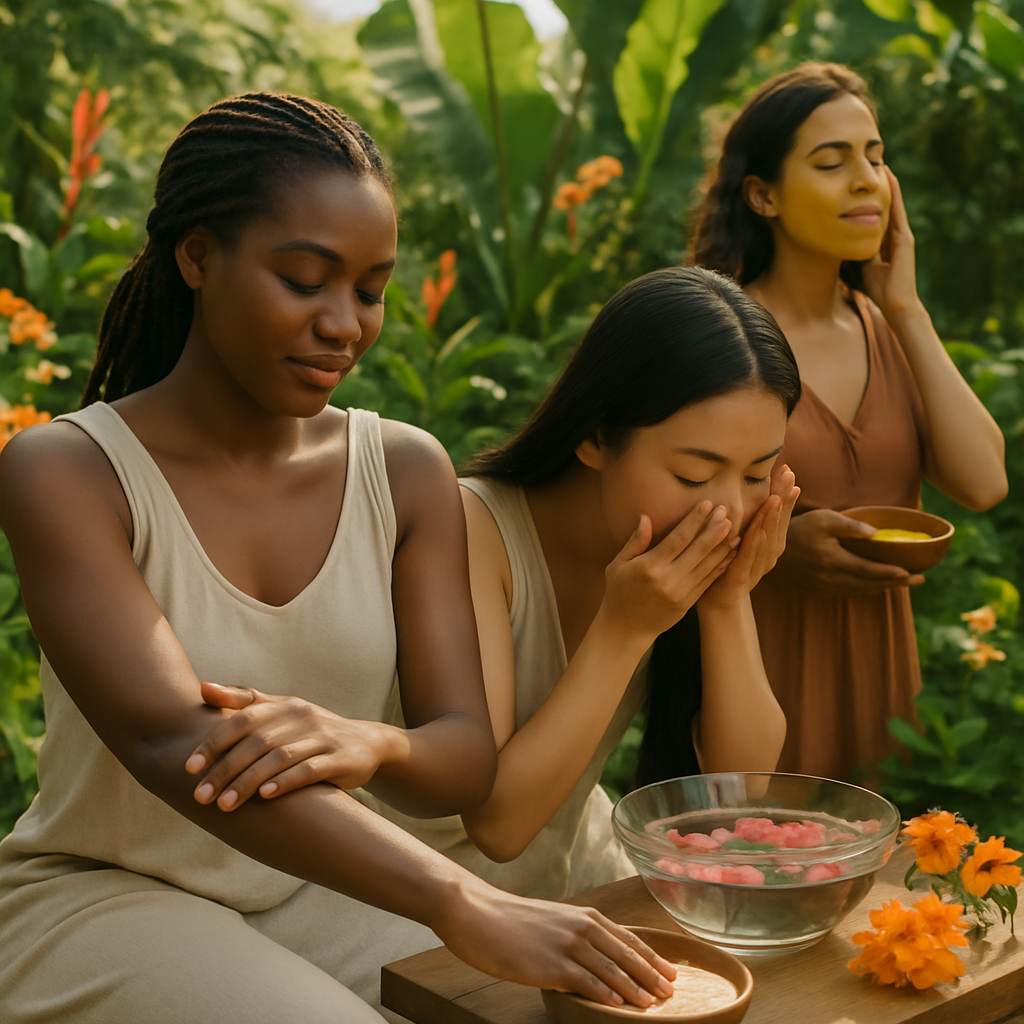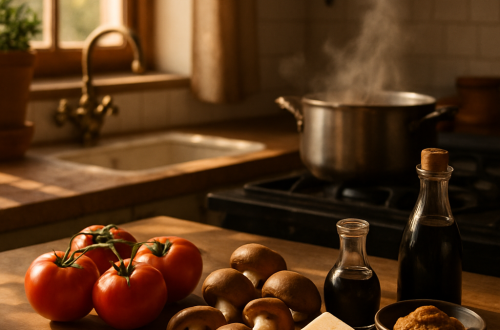Natural Beauty Rituals from Around the World

Beauty traditions are as diverse as the cultures that create them. From the hammams of Morocco to the hot springs of Japan, people around the world have developed unique rituals that harness local ingredients and ancient wisdom to enhance natural beauty. These practices often predate modern cosmetics by centuries, yet many remain relevant today as we increasingly seek authentic, sustainable approaches to self-care.
What makes these global beauty rituals particularly fascinating is how they reflect a holistic understanding of beauty one that connects physical appearance with spiritual well-being, environmental harmony, and cultural identity. Unlike the quick-fix promises of many commercial products, these traditions acknowledge beauty as a process that unfolds gradually through consistent practice and respect for natural rhythms.
I’ve had the privilege of witnessing many of these rituals firsthand while working with clients from diverse backgrounds. The wisdom embedded in these practices has profoundly influenced my approach to beauty, teaching me that true radiance comes from honoring both our bodies and the natural world.
Ancient Wisdom for Modern Beauty
Long before beauty became a multi-billion dollar industry, women across continents were creating effective treatments from ingredients found in their immediate environment. These formulations weren’t just effective they connected users to their cultural heritage and natural surroundings.
Japanese women have practiced the art of “Miyakofuzoku Kewaiden” (capital beauty) since the Heian period. Their beauty regimen includes rice water face washing, a practice that has gained popularity worldwide in recent years. The first time I tried this, I was skeptical just fermented rice water? But after a week, the difference in my skin’s texture was remarkable. The natural probiotics and amino acids work gently yet effectively to brighten and smooth.
In India, the 5,000-year-old practice of Ayurveda approaches beauty through balance of the doshas (body types). Treatments vary based on whether you’re predominantly Vata (air/space), Pitta (fire/water), or Kapha (earth/water). My friend Priya introduced me to the ritual of hair oiling with amla (Indian gooseberry) oil, which she learned from her grandmother. “We’d sit on the floor while she massaged the oil into my scalp,” Priya told me. “It wasn’t just about hair growth it was our time to connect.” I’ve adapted this practice for my clients with dry, damaged hair, and the results speak for themselves.
African beauty traditions showcase incredible botanical knowledge. Moroccan women have used rhassoul clay from the Atlas Mountains for centuries to purify hair and skin. This mineral-rich clay removes impurities without stripping natural oils a concept modern products are only now beginning to embrace. During a trip to Marrakech, I participated in a traditional hammam ritual where this clay was applied after steam opened the pores. My skin felt transformed deeply clean yet nourished in a way that conventional spa treatments rarely achieve.
Some natural ingredients sound bizarre until you try them. Korean beauty traditions include sheet masks soaked in snail mucin, while Russian women have long used banya (sauna) sessions followed by birch branch stimulation to boost circulation. I tried the latter during a particularly cold winter in Moscow and walked out with the most incredible glow though I admit the contrast between extreme heat and rolling in snow afterward was quite shocking!
Rituals That Transform
Beauty rituals around the world share a common thread: they’re not merely about applying products but about creating meaningful experiences that nurture both body and spirit.
Take the Finnish sauna tradition. Finns don’t view saunas as luxury experiences but as essential purification rituals and social spaces. The process involves alternating between the intense heat of the sauna and cooling off in lakes or snow, followed by gentle exfoliation with birch branches. This practice increases circulation, detoxifies the skin, and creates a profound sense of relaxation. During a photography assignment in Helsinki, I joined a family for their weekly sauna. What struck me most wasn’t just how beautiful their skin looked, but how the ritual fostered connection across generations.
Hawaiian beauty practices reflect deep respect for the land. Traditional lomilomi massage incorporates prayers and the use of kukui nut oil, which Hawaiian women have long applied to protect their skin from sun and sea. Before applying, practitioners ask permission from the plant spirits acknowledging that beauty comes from relationship with nature, not exploitation of it. This perspective feels especially relevant today as we confront the environmental impact of the beauty industry.
The Scandinavian concept of “friluftsliv” (open-air living) might not seem like a beauty ritual at first glance, but spending time outdoors in all seasons contributes significantly to the radiant complexions for which Nordic women are known. The combination of fresh air, natural light, and physical activity stimulates circulation and promotes healthy skin from within. Plus, exposure to diverse weather conditions makes skin more resilient.
Turkish coffee grounds serve double duty in homes across the Middle East first for drinking, then as a stimulating body scrub that reduces the appearance of cellulite. I learned this trick from a Turkish makeup artist who showed me how to mix the grounds with olive oil. “My grandmother would never waste good coffee,” she laughed. “Everything has multiple purposes.” The caffeine in the grounds temporarily tightens skin while the gentle abrasion removes dead cells.
Some beauty rituals mark significant life passages. In parts of North Africa, henna application before marriage isn’t merely decorative but protective the cooling properties of the plant are believed to calm nerves while the designs symbolize fertility and joy. I once assisted with a bride’s henna night in Tunis, watching as older women created intricate patterns while sharing wisdom about marriage. The bride later told me she felt the strength of generations of women supporting her through the designs on her skin.
Many traditional beauty practices emphasize what we put into our bodies rather than what we apply externally. Chinese women have consumed collagen-rich foods like fish maw soup and bone broths for centuries, understanding the connection between nutrition and skin elasticity long before collagen supplements became trendy. When I mentioned this to a dermatologist friend, she nodded enthusiastically: “The research is finally catching up to what traditional cultures have known forever.”
Beauty rituals also foster community. African hair braiding traditions aren’t just about style but about creating space for conversation and connection. The same applies to the social aspect of Korean bathhouses or Russian banyas beauty becomes a shared experience rather than a solitary pursuit.
The wisdom of these global traditions reminds us that beauty isn’t something to be achieved through quick fixes but cultivated through consistent, mindful practices that honor our connection to nature and to each other. By incorporating elements of these rituals into our lives, we can develop a more sustainable, joyful relationship with beauty.
These ancient practices offer something our fast-paced beauty culture often lacks: presence. Whether it’s the methodical application of henna, the meditative process of oil massage, or the communal experience of a hammam, traditional beauty rituals ask us to slow down and be fully present with ourselves. Perhaps this mindfulness, more than any ingredient or technique, is their greatest gift to modern beauty seekers.
As we face growing concerns about synthetic ingredients and unsustainable packaging in commercial products, these time-tested natural approaches feel increasingly relevant. They remind us that effective beauty solutions can be found in simple, natural ingredients that connect us to the earth rather than depleting it.
The next time you’re tempted by the latest beauty innovation, consider looking to the past instead. That jar of honey in your pantry was used by Cleopatra as a face mask. The oatmeal for your breakfast makes an excellent gentle exfoliant. The roses in your garden can be distilled into rosewater toner. Beauty doesn’t need to be complicated or expensive sometimes the most effective solutions are the ones that have stood the test of time.


